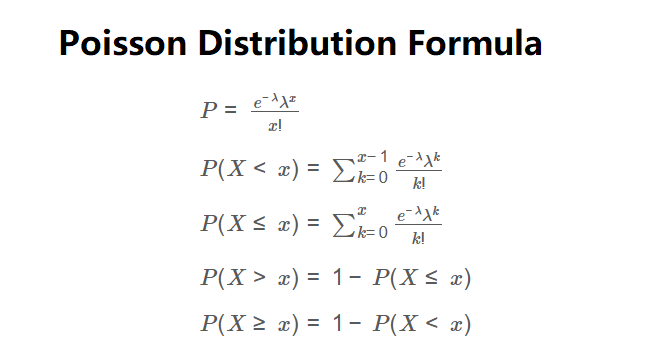 Home
Home
 Back
Back

Definition: The Poisson Distribution Calculator computes the probability of a specific number of events occurring in a fixed interval, along with cumulative probabilities, for a Poisson distribution with a given rate of success.
Purpose: This tool helps analyze the likelihood of events occurring at a constant rate, such as phone calls at a call center or defects in manufacturing, useful in statistics, operations research, and risk assessment.
The calculator uses the following formulas:
\( P = \frac{e^{-\lambda} \lambda^x}{x!} \)
\( P(X < x) = \sum_{k=0}^{x-1} \frac{e^{-\lambda} \lambda^k}{k!} \)
\( P(X \leq x) = \sum_{k=0}^{x} \frac{e^{-\lambda} \lambda^k}{k!} \)
\( P(X > x) = 1 - P(X \leq x) \)
\( P(X \geq x) = 1 - P(X < x) \)
Where:
Steps:
Calculating Poisson distribution probabilities is essential for:
Example: Calculate probabilities for a call center receiving an average of 5 calls per hour (λ = 5) with exactly 3 calls (x = 3):
Q: What is a Poisson distribution?
A: A Poisson distribution models the probability of a given number of independent events occurring in a fixed interval of time or space with a constant mean rate [web:6].
Q: What does λ represent?
A: The parameter λ is the average rate of occurrence of events in the specified interval, equal to the mean and variance of the distribution.
Q: When should I use this calculator?
A: Use it to predict event frequencies in scenarios like call center operations, manufacturing defects, or rare event analysis in finance and science.